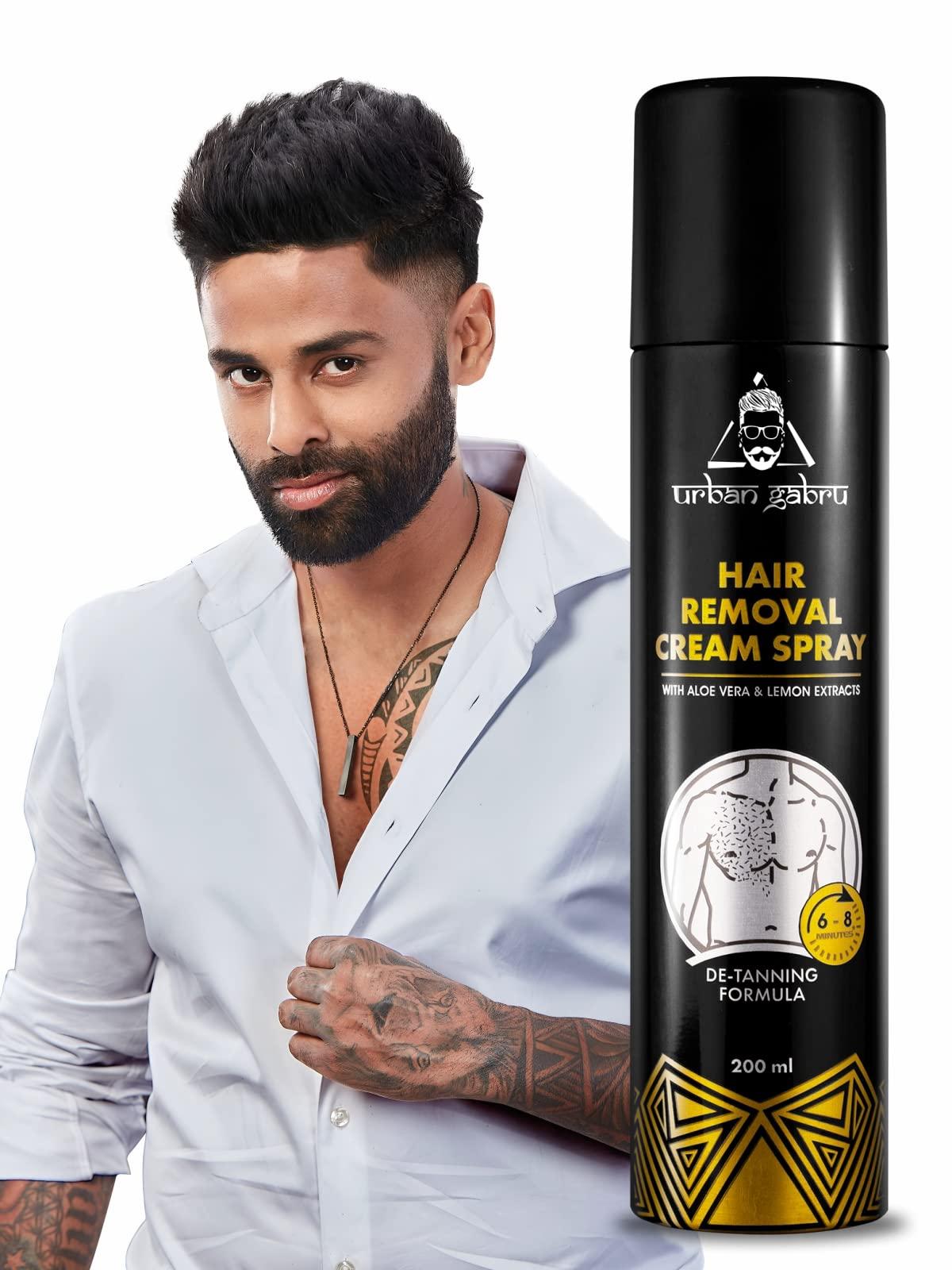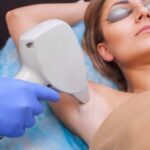Smooth or Sorry? Unpacking Hair Removal Spray Risks
Picture this: it’s a sunny Saturday morning, and you’ve planned a beach day. You’ve packed your sunscreen, a wide-brimmed hat, and a novel you’ve been itching to read. Just as you slip into your favorite swimsuit, you catch a glimpse of those stubborn little hairs daring to make an appearance. Panic sets in—no time for waxing, no patience for the razor. Enter the hero of convenience: hair removal spray. With promises of silky smooth skin in mere minutes, it feels like a miracle in a can. But, is it really all sunshine and smooth skin? Or could these handy sprays conceal risks that might rain on your parade? In this article, we’re diving deep into the world of hair removal sprays to find out if they’ll have you feeling smooth or sorry. Grab a drink, settle in, and let’s unravel the intriguing, sometimes sticky, truths behind this beauty staple.
Table of Contents
- Understanding the Hair Removal Spray Craze
- Hidden Ingredients: What to Watch Out For in Hair Removal Sprays
- Potential Side Effects and How to Mitigate Them
- Choosing the Right Spray for Your Skin Type
- Safe Application Tips: Getting the Best Results Without Regret
- Q&A
- To Conclude
Understanding the Hair Removal Spray Craze
In recent years, hair removal sprays have gained immense popularity, promising silky smooth skin without the pain of waxing or the hassle of shaving. These sprays are marketed as a quick, painless, and effective solution for achieving hair-free skin. But what exactly is in these miracle cans, and are they really as safe as they claim to be? Let’s dive into the ingredients, application techniques, and potential pitfalls to provide a clearer picture of this trending beauty product.
Common Ingredients & Their Functions:
- Thioglycolic Acid: Helps to break down the keratin in hair, making it easier to remove.
- Calcium Hydroxide: Acts as a pH balancer and helps in the depilatory process.
- Aloe Vera Extract: Soothes and moisturizes the skin post-application.
- Fragrance Additives: Provide a pleasant scent, masking the often strong odor of the chemical ingredients.
While the promise of effortless hair removal is alluring, it’s crucial to understand the potential risks involved. Improper use or overuse of hair removal sprays can lead to a myriad of skin issues. These range from minor irritations like redness and itching to more severe reactions such as chemical burns and allergic responses. Always conduct a patch test before utilizing any new product to ensure your skin is compatible with the formula.
| Possible Side Effects | Prevention Tips |
|---|---|
| Redness and Itching | Conduct a patch test, follow application instructions carefully |
| Chemical Burns | Avoid leaving the spray on for too long, seek immediate medical attention if severe |
| Allergic Reactions | Check ingredient list for known allergens, discontinue if irritation occurs |
Despite the risks, many users swear by hair removal sprays, citing convenience and efficacy as their main selling points. To maximize benefits while minimizing downsides, always adhere to the recommended usage guidelines. Start by shaking the can well and spraying a light layer from a distance of about 10 cm. Allow the product to sit on your skin for the time specified in the instructions, then wipe it off gently with a damp cloth. With diligent use and proper precautions, you can join the ranks of smooth-skinned devotees without any regrets.

Hidden Ingredients: What to Watch Out For in Hair Removal Sprays
Many hair removal sprays boast quick, painless results, but what lurks in those ingredient lists might surprise you. A frequent culprit hiding in plain sight is **Thioglycolic Acid**. While this compound effectively breaks down the protein in hair, facilitating easy removal, it can also lead to skin irritation and allergic reactions in some users. It’s worthwhile to perform a patch test before applying any product with this ingredient fully, ensuring your skin won’t react adversely.
Another common but often overlooked ingredient is **Calcium Hydroxide**, sometimes listed as lime. Known for its high pH levels, it can stabilize other substances in the spray, but it tends to be very alkaline, which can disrupt your skin’s natural balance. Prolonged exposure can result in dryness and discomfort, posing particular risks for people with sensitive skin or existing skin conditions.
Below you’ll see a helpful table summarizing some key ingredients and their potential effects:
| Ingredient | Potential Risk |
|---|---|
| Thioglycolic Acid | Skin irritation, allergic reactions |
| Calcium Hydroxide | Disrupts skin pH, dryness |
| Fragrance | Allergies, sensitivity issues |
Fragrance is another ingredient that can often be found in hair removal sprays. While it may make the product more appealing to use, it can also introduce a medley of chemicals, some of which may cause allergic reactions or exacerbate skin conditions. Opting for products labeled as “fragrance-free” can help in reducing such risks.
Lastly, keep an eye out for **Parabens**, commonly used as preservatives to extend shelf life. Though they are effective, there is growing concern over their potential link to hormonal imbalances and other health issues. More consumers are leaning towards **paraben-free** products for peace of mind, considering the evolving body of research on their long-term effects.

Potential Side Effects and How to Mitigate Them
The allure of silky-smooth skin can often overshadow the potential side effects that come with hair removal sprays. While these sprays are designed to be a convenient alternative to shaving or waxing, they can sometimes cause unintended reactions. Some of the most common issues include skin irritation, redness, or even mild burns. These reactions are usually due to the chemicals used in the sprays, which can be harsh on sensitive skin or if left on for too long. Thankfully, these side effects can be mitigated with proper precautions.
To lessen the risk of side effects, it’s crucial to perform a **patch test** before fully committing to the spray. This involves applying a small amount of the product to an inconspicuous area of your skin and waiting 24 hours to see if any irritation occurs. Additionally, make sure to follow the instructions provided with the hair removal spray meticulously. Leaving the product on longer than recommended or applying too thick a layer can exacerbate potential skin issues.
- **Moisturize** the skin after using the spray to help soothe any residual irritation.
- **Avoid sun exposure** immediately afterward to prevent further sensitivity.
- **Use calming agents** like aloe vera or chamomile lotion to alleviate any redness or burning.
| Potential Side Effect | Mitigation Strategy |
|---|---|
| Redness | Apply cool compresses and soothing lotions |
| Itching | Use hydrocortisone creams or antihistamines |
| Dryness | Moisturize with a high-quality lotion |
always consider consulting with a dermatologist if you have pre-existing skin conditions or if the unwanted reactions persist. Sometimes, what works for others may not work for you, and a professional can offer personalized advice. By taking these preventive measures, you can enjoy the benefits of hair removal sprays without the downsides, ensuring your pursuit of smooth skin doesn’t end in regret.

Choosing the Right Spray for Your Skin Type
The journey to smooth, hair-free skin isn’t a one-size-fits-all experience. Each skin type responds differently to various chemical formulations found in hair removal sprays. Choosing the right spray means understanding your skin’s unique characteristics and needs. Here’s what you need to consider:
- Dry Skin: Opt for sprays enriched with moisturizing agents like aloe vera or glycerin. These ingredients not only help remove hair but also replenish your skin’s hydration.
- Oily Skin: Look for products labeled as non-comedogenic, meaning they won’t clog pores. Sprays with lightweight, fast-absorbing ingredients can manage excess oil effectively.
- Sensitive Skin: Choose sprays designed specifically for sensitive skin, often labeled hypoallergenic. These formulations usually avoid harsh chemicals like alcohol or artificial fragrance.
- Normal Skin: Lucky you! Most hair removal sprays will be suitable, but it’s still wise to conduct a patch test to rule out any unexpected reactions.
Not all sprays are created equal, and your skin type should steer your decision. After all, the last thing you want is to swap your smooth look for a sorry one laden with irritation and bumps. Common ingredients found in sprays that work wonders (and some to be wary of) are showcased below:
| Ingredient | Skin Type | Effect |
|---|---|---|
| Aloe Vera | Dry | Hydrates and soothes |
| Salicylic Acid | Oily | Prevents clogged pores |
| Chamomile Extract | Sensitive | Calms and reduces irritation |
| Panthenol | Normal | Moisturizes and heals |
Remember, a patch test can be your best friend. Simply apply a small amount of the spray to a less visible area of your skin and wait 24 hours. No reaction? You’re good to go! If redness, itching, or swelling occurs, it’s probably best to explore other options. Taking these extra steps ensures your quest for hair-free skin results in a smooth experience rather than a series of unfortunate events.

Safe Application Tips: Getting the Best Results Without Regret
Achieving silky smooth skin sounds like a dream, but rushing into the process can turn it into a nightmare. To keep your hair removal spray experience unforgettable—in a good way—start with a **patch test**. This simple step helps you identify any negative reactions before they spread across a larger area. Apply a small amount on your inner wrist or behind your ear and wait 24 hours. If there’s no redness, itching, or discomfort, you’re in the clear for broader applications.
Timing is everything! **Leave the product on only for the recommended duration**. Overexposure can cause irritation, burns, or unwanted dark spots. Set a timer to remind yourself of the removal time. If you have sensitive skin, you might want to start with less than the suggested time and gradually increase it as your skin gets accustomed to the product.
- Even Application: Use a clean, dry cloth to ensure a seamless spread of the product.
- Post-Application Care: Rinse thoroughly with cool water and avoid hot showers for 24 hours.
- Skin Hydration: Moisturize with a fragrance-free lotion to soothe your skin and lock in moisture.
To get the best results, understand your skin type and choose products accordingly. Here’s a quick reference guide to make your selection easier:
| Skin Type | Recommended Ingredients | Avoid |
|---|---|---|
| Dry | Aloe Vera, Vitamin E | Alcohol-based |
| Oily | Green Tea, Witch Hazel | Heavy Oils |
| Sensitive | Chamomile, Calendula | Fragrances |
Q&A
Q: What exactly is a hair removal spray, and how does it work?
A: Imagine a magic potion in a can! Hair removal sprays are formulated to dissolve the keratin structure of your hair. You spray it on, let it sit for a few minutes, and then wipe it away, along with the hair. It’s like a mini science experiment on your skin—minus the safety goggles and lab coat.
Q: Sounds nifty! But are there any hidden risks?
A: Ah, the plot thickens! While these sprays can be convenient, they come with their own set of risk factors. Ingredients like calcium thioglycolate and potassium hydroxide can cause skin irritation, allergic reactions, and even chemical burns if misused. Think of it as using dragon fire—handle with care!
Q: How can I tell if my skin will react badly to a hair removal spray?
A: The wise old saying, “Better safe than sorry,” comes into play here. Always—yes, always—do a patch test. Apply a small amount of the spray on a tiny section of your skin and wait 24 hours. If your skin remains calm and unruffled, you’re probably in the clear. Skipping this step could turn you from smooth to sorry faster than you can say “ouch!”
Q: Are there particular skin types that should avoid hair removal sprays altogether?
A: Great question! If your skin could write a diary, sensitive or eczema-prone skin types would jot down some serious complaints after using these sprays. Also, if you have broken or irritated skin, it’s best to avoid them. When in doubt, consult a dermatologist—think of them as your skin’s personal psychic advisor.
Q: Yikes! If my skin starts burning or itching after using the spray, what should I do?
A: Time to channel your inner first responder! Rinse the affected area with cool water immediately—no scrubbing or soap, please. Apply a soothing aloe vera gel or a mild, fragrance-free moisturizer. If the issue persists, it’s time to ring up your healthcare provider. You don’t want to gamble when your skin’s throwing a tantrum!
Q: Are there safer alternatives to hair removal sprays?
A: Absolutely! If sprays seem a bit too risky, you can explore alternatives like shaving, waxing, epilators, or good old-fashioned tweezing. Laser hair removal is also an option if you’re looking for something more long-term. Each method has its pros and cons, like characters in a story, so pick the one that fits your narrative best.
Q: Any parting words of wisdom on navigating the wonders (and woes) of hair removal sprays?
A: Think of hair removal sprays as a high-wire act in a circus—amazing when done right, but not without its risks. Always read the instructions, do your patch tests, and listen to your skin. By doing this, you’ll tip the scales in favor of ”smooth” rather than “sorry.” And remember, no matter what method you choose, self-care and a little caution go a long way!
Feel like a hair removal spray pro now? We hope so! Happy smooth sailing!
To Conclude
As we bring this exploration into the world of hair removal sprays to a close, it’s clear that the journey to silky-smooth skin is paved with choices. By shedding light on the potential risks and highlighting key considerations, we hope to have equipped you with the knowledge to navigate your hair removal regimen with confidence.
Whether you choose to spray away or pursue other methods, always remember that your skin’s health and well-being are paramount. Embrace the smooth, but do it smartly—because being informed is the first step toward being fabulous. Stay gorgeous, stay savvy, and keep those beauty adventures both exciting and safe! Until next time, happy grooming!





